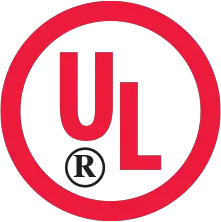The article covers electrical codes and standards, including OSHA regulations for workplace safety, the National Electrical Code (NEC) for safe electrical installations, NFPA’s fire safety codes, NRTL testing requirements like Underwriters Laboratories (UL), and NEMA’s safety standards for electrical equipment.
Occupational Safety and Health Administration
In 1970, Congress created a regulatory agency known as the Occupational Safety and Health Administration (OSHA). OSHA’s main goal is to ensure that employers provide each of their employees with a place of employment that is free of recognized hazards. Employers have certain responsibilities under the act that require them to identify potential hazards and eliminate them, control them, or provide employees with suitable protection from them. Employees are responsible for following the safety procedures set up by the employer.
OSHA inspectors check on employers to make sure they are following prescribed safety regulations. OSHA also inspects and approves safety products. OSHA’s electrical standards are designed to protect employees exposed to dangers such as electric shock, electrocution, fires, and explosions.
National Electrical Code
The National Electrical Code (NEC) comprises a set of rules that, when properly applied, are intended to provide a safe installation of electrical wiring and equipment. This widely adopted minimum electrical safety standard has the primary purpose of safeguarding persons and property from hazards arising from the use of electricity. Standards contained in the NEC are enforced by being incorporated into the different city and community ordinances that deal with electrical installations in residences, industrial plants, and commercial buildings. The NEC is the most widely adopted code in the world, and many jurisdictions adopt it in its entirety without exception or local amendments or supplements.
First published in 1897, the National Electrical Code is updated and published every three years. Most states adopt the most recent edition within a couple of years of its publication. The National Electrical Code is organized by chapters and articles as follows:
Chapters are major subdivisions of the NEC that cover a broad range of topics. The following is a breakdown of each of the chapters:
Chapter 1: General (definitions and requirements for electrical installations)
Chapter 2: Wiring and Protection
Chapter 3: Wiring Methods and Materials
Chapter 4: Equipment for General Use
Chapter 5: Special Occupancies
Chapter 6: Special Equipment
Chapter 7: Special Conditions
Chapter 8: Communications Systems
Chapter 9: Tables
Articles are chapter subdivisions that cover a specific subject such as grounding, overcurrent protection, lighting fixtures, and so on. Articles are divided into sections and sometimes into parts. When an article is sufficiently large, or where necessary to logically group requirements, it is subdivided into parts that correspond to logical groupings of information.
National Fire Protection Association
The National Fire Protection Association (NFPA) develops codes governing construction practices in the building and electrical trades. It is the world’s largest and most influential fire safety organization. NFPA has published almost 300 codes and standards, including the National Electrical Code, with the mission of preventing the loss of life and property.
Nationally Recognized Testing Laboratory
In accordance with OSHA safety standards, a nationally recognized testing laboratory (NRTL) must test electrical products for conformity to national codes and standards before they can be listed or labeled. The biggest and best-known testing laboratory is the Underwriters Laboratories, identified with the UL logo shown in Figure 1.

Figure 1. Underwriters Laboratories logo.
Article 100 of the NEC defines the terms labeled and listed, which are both related to product evaluation. Labeled or listed indicates the piece of electrical equipment or material has been tested and evaluated for the purpose for which it is intended to be used. Products that are big enough to carry a label are usually labeled. The smaller products are usually listed.
National Electrical Manufacturers Association
The National Electrical Manufacturers Association (NEMA) is a group that defines and recommends safety standards for electrical equipment. Standards established by NEMA assist users in the proper selection of industrial control equipment, as illustrated in Figure 2. For example, NEMA standards provide practical information concerning the rating, testing, performance, and manufacture of devices such as enclosures, contactors, and starters.

Figure 2. NEMA type 1 enclosure.
Review Questions
- What is the main goal of OSHA?
- What is the primary purpose of the rules set forth in the National Electrical Code?
- Assume a piece of electrical equipment has been listed by the Underwriters Laboratories. What does this indicate?
- How often is the National Electrical Code updated and published?
Answers
- OSHA’s main goal is to ensure that employers provide each of their employees a place of employment that is free of recognized hazards.
- The National Electrical Code (NEC) standard has the primary purpose of safeguarding persons and property from hazards arising from the use of electricity.
- Listed by Underwriters Laboratories indicates the piece of electrical equipment or material has been tested and evaluated for the purpose for which it is intended to be used.
- Every 3 years.
Key Takeaways
Electrical codes and standards are crucial for ensuring safety and reliability in various applications involving electricity. Regulations set by organizations like OSHA, NEC, NFPA, NRTL, and NEMA establish guidelines for workplace safety, electrical installations, fire prevention, product testing, and equipment standards. Adhering to these codes not only protects individuals from electrical hazards but also minimizes the risk of property damage and ensures the proper functioning of electrical systems and equipment.